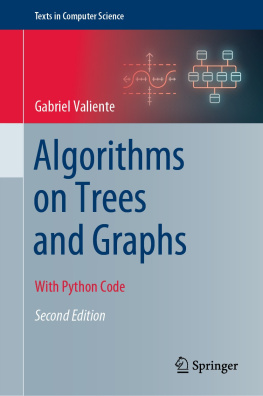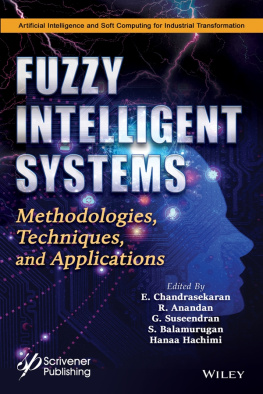Akram M. - Application of Bipolar Fuzzy Sets in Graph Structures
Here you can read online Akram M. - Application of Bipolar Fuzzy Sets in Graph Structures full text of the book (entire story) in english for free. Download pdf and epub, get meaning, cover and reviews about this ebook. genre: Science. Description of the work, (preface) as well as reviews are available. Best literature library LitArk.com created for fans of good reading and offers a wide selection of genres:
Romance novel
Science fiction
Adventure
Detective
Science
History
Home and family
Prose
Art
Politics
Computer
Non-fiction
Religion
Business
Children
Humor
Choose a favorite category and find really read worthwhile books. Enjoy immersion in the world of imagination, feel the emotions of the characters or learn something new for yourself, make an fascinating discovery.

Application of Bipolar Fuzzy Sets in Graph Structures: summary, description and annotation
We offer to read an annotation, description, summary or preface (depends on what the author of the book "Application of Bipolar Fuzzy Sets in Graph Structures" wrote himself). If you haven't found the necessary information about the book — write in the comments, we will try to find it.
Academic Editor: Baoding LiuCopyright 2016 Muhammad Akram and Rabia Akmal. This is an open access article distributed under the Creative Commons Attribution License, which permits unrestricted use, distribution, and reproduction in any medium, provided the original work is properly cited.Abstract.
A graph structure is a useful tool in solving the combinatorial problems in different areas of computer science and computational intelligence systems. In this paper, we apply the concept of bipolar fuzzy sets to graph structures. We introduce certain notions, including bipolar fuzzy graph structure (BFGS), strong bipolar fuzzy graph structure, bipolar fuzzy -cycle, bipolar fuzzy -tree, bipolar fuzzy -cut vertex, and bipolar fuzzy -bridge, and illustrate these notions by several examples. We study -complement, self-complement, strong self-complement, and totally strong self-complement in bipolar fuzzy graph structures, and we investigate some of their interesting properties.Introduction.
Concepts of graph theory have applications in many areas of computer science including data mining, image segmentation, clustering, image capturing, and networking. A graph structure, introduced by Sampathkumar [1], is a generalization of undirected graph which is quite useful in studying some structures including graphs, signed graphs, and graphs in which every edge is labeled or colored. A graph structure helps to study the various relations and the corresponding edges simultaneously.
A fuzzy set, introduced by Zadeh [2], gives the degree of membership of an object in a given set. Zhang [3] initiated the concept of a bipolar fuzzy set as a generalization of a fuzzy set. A bipolar fuzzy set is an extension of fuzzy set whose membership degree range is . In a bipolar fuzzy set, the membership degree of an element means that the element is irrelevant to the corresponding property, the membership degree of an element indicates that the element somewhat satisfies the property, and the membership degree of an element indicates that the element somewhat satisfies the implicit counterproperty. Kauffman defined in [4] a fuzzy graph. Rosenfeld [5] described the structure of fuzzy graphs obtaining analogs of several graph theoretical concepts. Bhattacharya [6] gave some remarks on fuzzy graphs. Several concepts on fuzzy graphs were introduced by Mordeson et al. [7]. Dinesh [8] introduced the notion of a fuzzy graph structure and discussed some related properties. Akram et al. [913] have introduced bipolar fuzzy graphs, regular bipolar fuzzy graphs, irregular bipolar fuzzy graphs, antipodal bipolar fuzzy graphs, and bipolar fuzzy hypergraphs. In this paper, we introduce the certain notions including bipolar fuzzy graph structure (BFGS), strong bipolar fuzzy graph structure, bipolar fuzzy -cycle, bipolar fuzzy -tree, bipolar fuzzy -cut vertex, and bipolar fuzzy -bridge and illustrate these notions by several examples. We present -complement, self-complement, strong self-complement, and totally strong self-complement in bipolar fuzzy graph structures, and we investigate some of their interesting properties.
We have used standard definitions and terminologies in this paper. For other notations, terminologies, and applications not mentioned in the paper, the readers are referred to [1, 5, 7, 1418].Introduction.
Preliminaries.
Bipolar Fuzzy Graph Structures.
Conclusions.
Conflict of Interests.
Acknowledgment.
References (18 publ).
Akram M.: author's other books
Who wrote Application of Bipolar Fuzzy Sets in Graph Structures? Find out the surname, the name of the author of the book and a list of all author's works by series.









